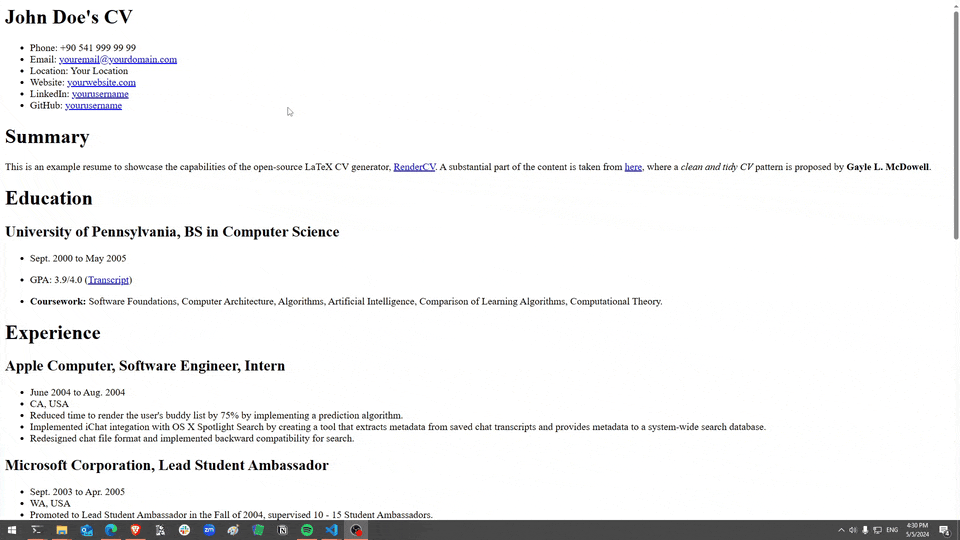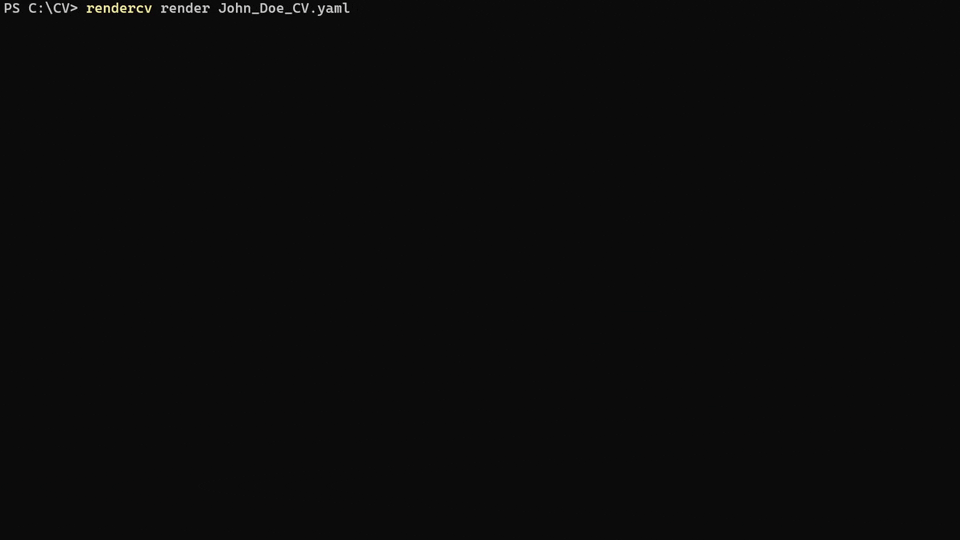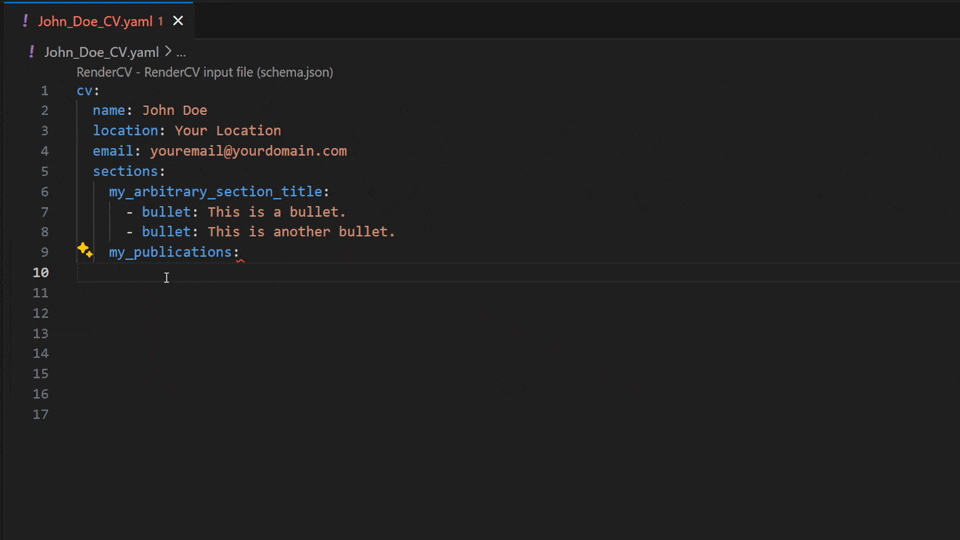RenderCV allows you to create a high-quality CV as a PDF from a YAML input file. It supports Markdown syntax and gives you complete control over the
The primary motivation behind RenderCV is to provide a concrete framework that allows:
- Version controlling a CV's content and design separately and in an organized manner.
- Building an automated pipeline that updates the final output (PDF,
$\LaTeX$ , Markdown, HTML, and PNGs) whenever the content is modified. - Making the CV's design uniform and nicely structured without room for human errors.
RenderCV offers built-in
RenderCV takes a YAML file that looks like this:
cv:
name: John Doe
location: Your Location
email: [email protected]
sections:
this_is_a_section_title:
- This is a type of entry, TextEntry—just a plain string.
- You may have as many entries as you want under a section.
- RenderCV offers a variety of entry types such as TextEntry,
BulletEntry, EducationEntry, ExperienceEntry, NormalEntry,
OneLineEntry, PublicationEntry.
- Each entry type has its own set of attributes and different
looks.
my_education_section:
- institution: Boğaziçi University
area: Mechanical Engineering
degree: BS
start_date: 2024-09
end_date: 2029-05
highlights:
- 'GPA: 3.9/4.0 ([Transcript](https://example.com))'
- '**Coursework:** Structural Analysis, Thermodynamics,
Heat Transfer'
experience:
...Then, it produces one of these PDFs with its corresponding
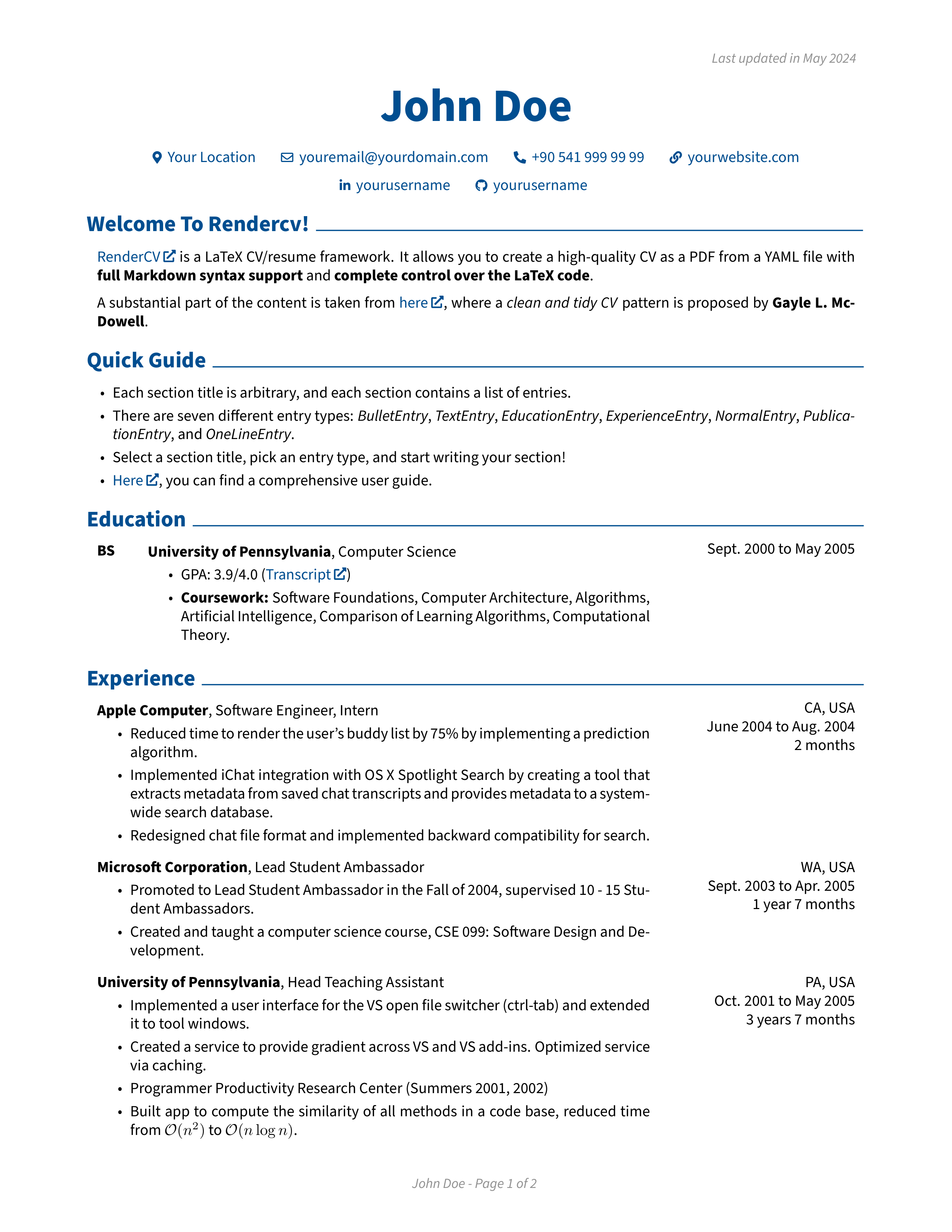 |
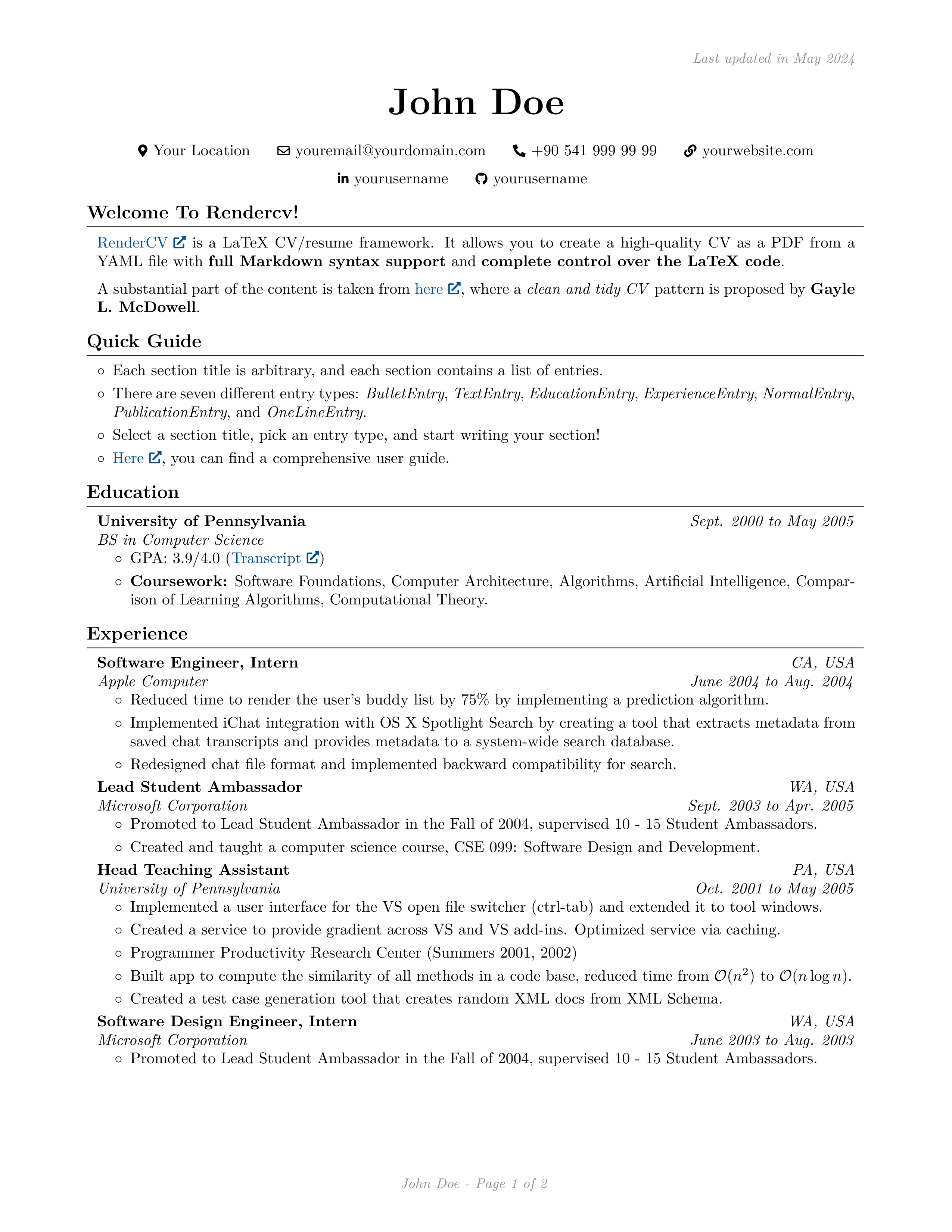 |
|---|---|
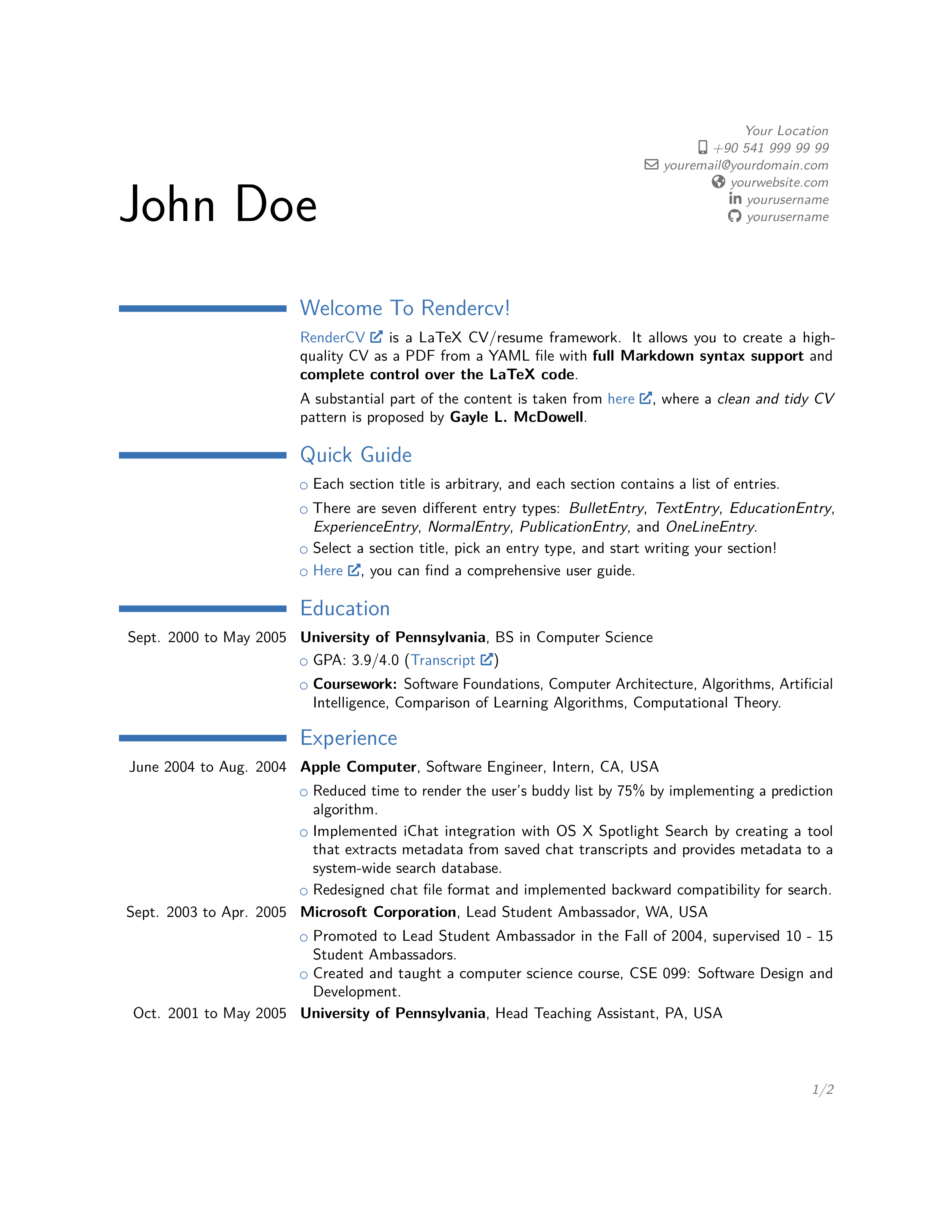 |
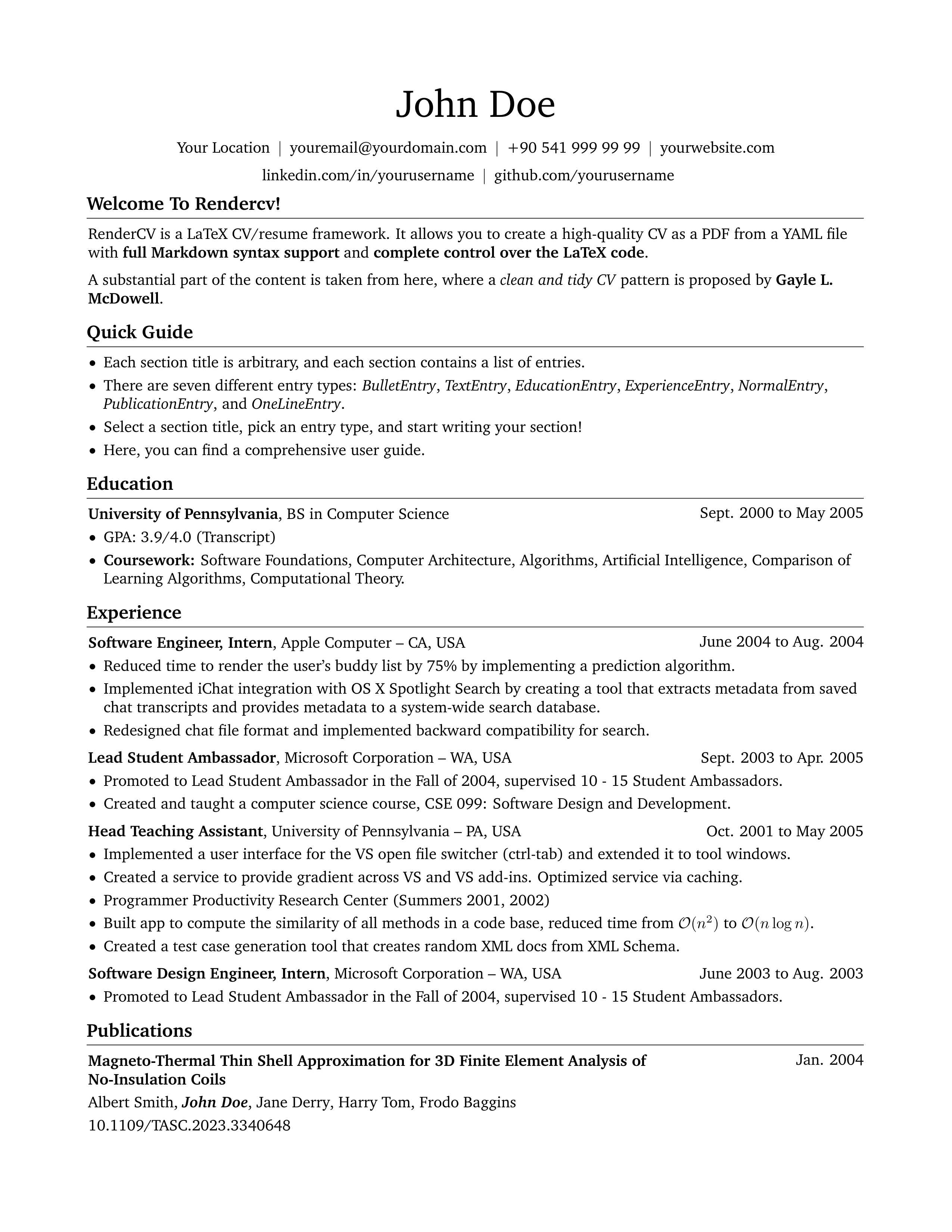 |
The contents of the HTML file can be pasted into Grammarly or any word processor for spelling and grammar checking.
It also validates the input file. If there are any problems, it tells users where the problems are and how they can fix them.
RenderCV comes with a JSON Schema so that the YAML input file can be filled out interactively.
Either use rendercv-pipeline or follow the steps below.
- Install Python (3.10 or newer).
- Run the command below in a terminal to install RenderCV.
pip install rendercv
- Run the command below to generate starting input files.
rendercv new "Full Name" - Edit the contents of
Full_Name_CV.yamlin your favorite editor (tip: use an editor that supports JSON Schemas). - Run the command below to generate your CV.
rendercv render Full_Name_CV.yaml
Here, you can find a comprehensive user guide that covers the YAML input file structure and command-line interface (CLI) in greater detail.
Writing the content of a CV and designing a CV are separate issues that should be treated separately. RenderCV attempts to provide this separation. This approach encourages users to concentrate on the content without getting distracted by the appearance of their CV and vice versa.
RenderCV also provides a set of utilities that automate most of the manual work involved in the CV updating process. After updating a single sentence or date in the YAML input file written in pure English, RenderCV will:
- Re-create your
$\LaTeX$ file, - Render a new PDF file,
- Create a new Markdown file,
- Create a new HTML document, and
- Create images of each page of the PDF file as PNGs.
Why use RenderCV instead of
$\LaTeX$ ? I can version-control$\LaTeX$ code too!
RenderCV is not a replacement for
Advantages of RenderCV over using pure
- RenderCV will separate the content of your CV from your
$\LaTeX$ code. They will sit in independent files, and RenderCV will use both to generate your CV. - You will be able to version-control your
$\LaTeX$ code and content separately. - Updating your content in a YAML file is easier than updating a complex
$\LaTeX$ file. - A pure
$\LaTeX$ CV will have many code duplications because a CV is a document with a list of sections that contain a list of entries. RenderCV has only one$\LaTeX$ code for each entry type, duplicated automatically based on the YAML input file. - Spell-checking is not very straightforward in
$\LaTeX$ documents.
All contributions to RenderCV are welcome! To get started, please read the developer guide.
)
)
)
